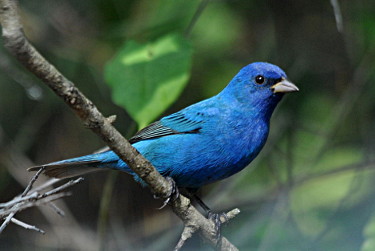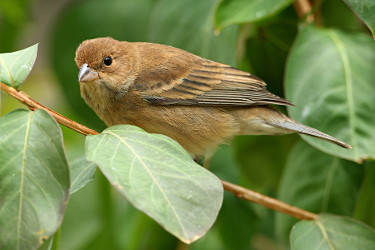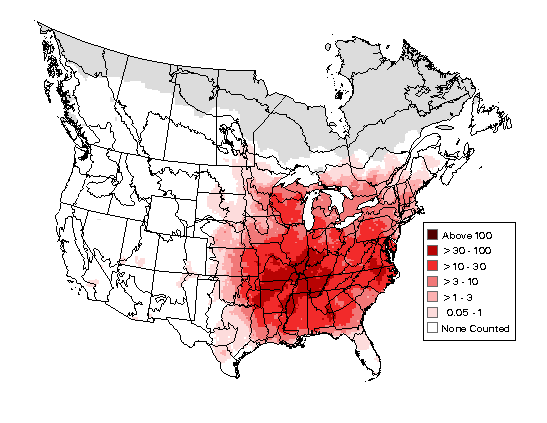Indigo Bunting

Indigo Bunting Information
Length: 4.5 - 5.5"
Habitat: Woodland edges, brushy fields, open deciduous woodlands, woodland clearings, roadside thickets. Prefers area with a few tall trees or other high perches.
Diet: Insects, spiders, seeds, berries.
![]() Songs of Indigo Bunting
Songs of Indigo Bunting
Song
(Other birds in background)
Audio credit: ---n, Xeno-Canto [CC NC SA 4.0]
Calls and song
(Other birds in background)
Audio credit: ---s, Xeno-Canto [CC NC SA 4.0]
From Cornell Lab:
Another song plus calls of Indigo Bunting
Additional Information
Indigo BuntingPhoto, geographic range, habitat, physical characteristics, reproduction, behavior, food habits, conservation status. (From Animal Diversity Web)
Photos of Indigo Bunting
From Peter LaTourrette's Bird Photo Gallery
Female Indigo Bunting

© Howard Cheek
Indigo Bunting
Identification Tips
- Small, conical bill
- Deep blue plumage (in poor light appears black)
- Blackish wings and tail with blue edges
- Basic-plumaged male (Fall and Winter) similar to adult female but often has has some blue feathers
- Dark brown upperparts
- Warm brown underparts with faint dark streaks
- Indistinct wing bars
- Immature plumages similar to adult female-immature male can have blue patches
(Credit: U. S. Geological Survey)
Breeding Bird Survey Map,
2011-2015

(Image credit: USGS)
Range in New England
The Indigo Bunting breeds throughout New England with the exception of northern Maine.
This bird winters mainly in southern Florida, Greater Antilles, Mexico, and Central America.
Christmas Bird Count Map
Historical CBC Map from USGS